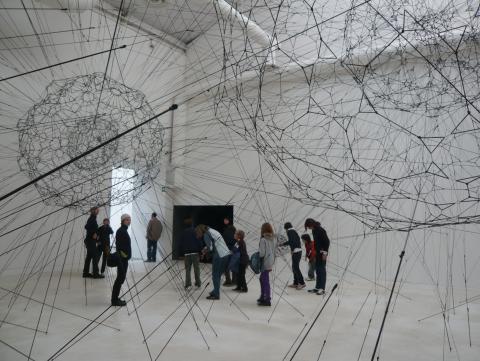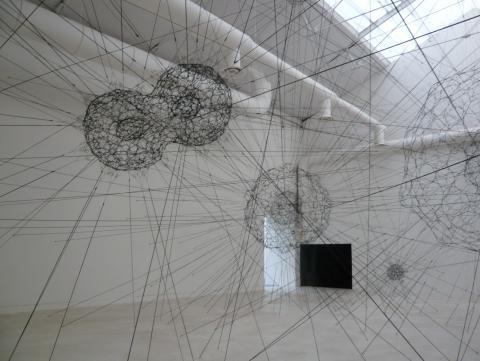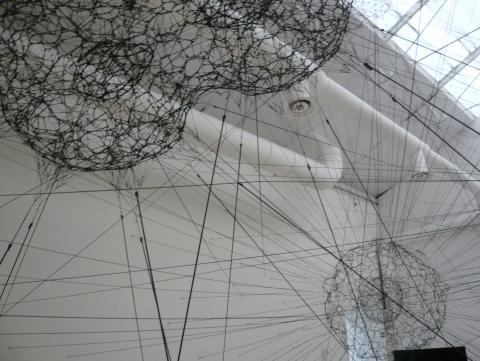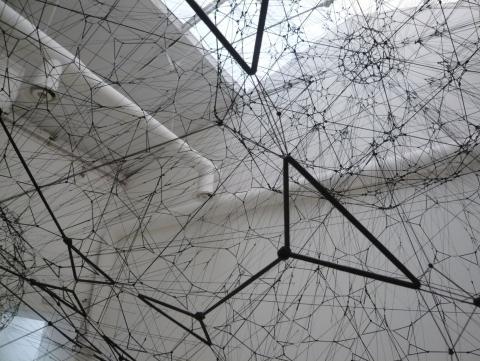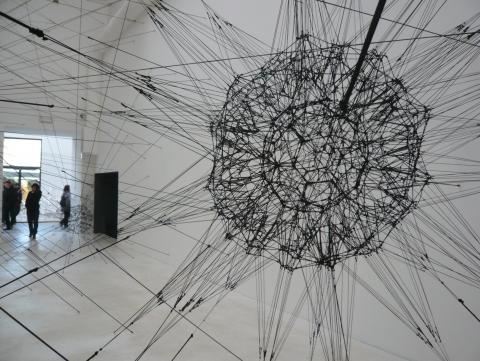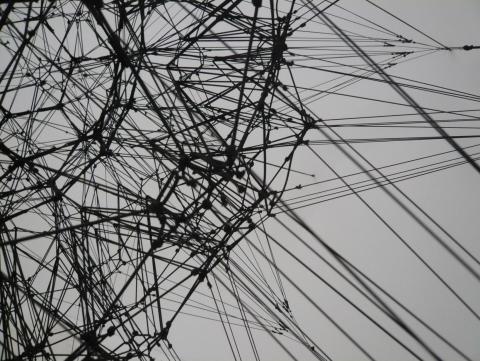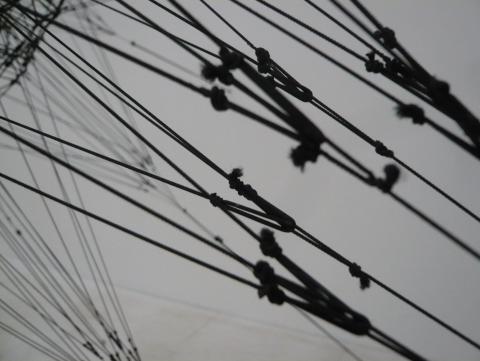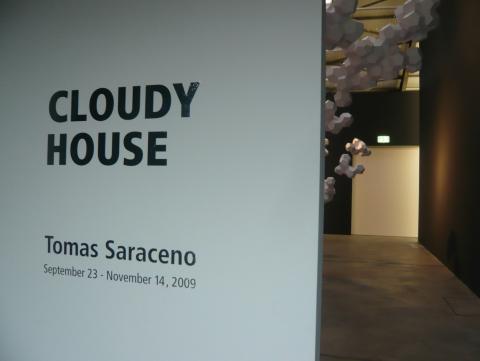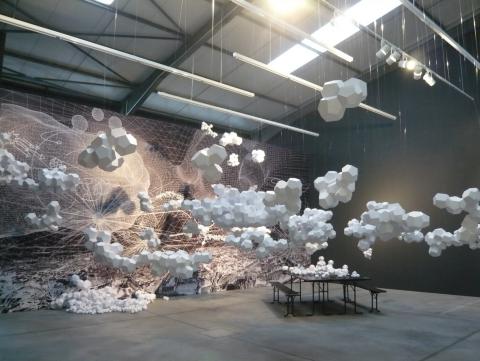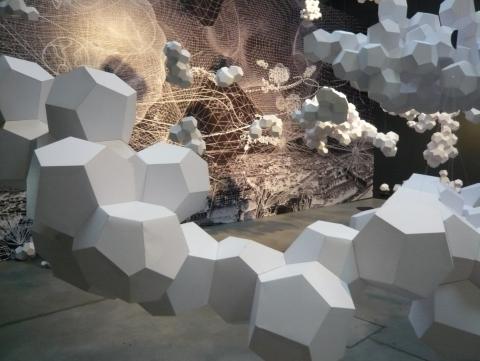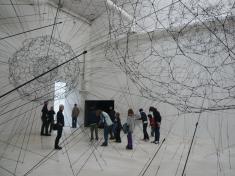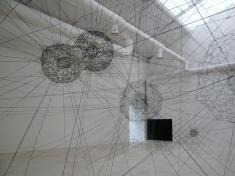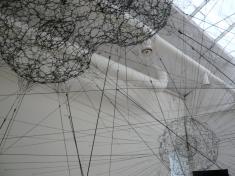Tomás Saraceno (AR)
Spiders in Venice / Clouds in Berlin
Attending the 53rd Venice Biennale in September 2009 and then travelling to Berlin to visit galleries and meet artists, I had the good fortune to see two impressive installations by Argentinian artist Tomás Saraceno, who now lives and works in Frankfurt am Main. 'Galaxies forming along filaments, like droplets along the strands of a spider's web' 2009, made of elastic ropes, was on show in the Italian Pavilion as part of the Fare Mondi / Making Worlds exhibition; and at Andersen's Contemporary Berlin gallery at 50/51 Invalidenstrasse the artist had installed 'Cloudy House.'
While his installation at Venice examined how the black widow's gossamer filaments are able to suspend extreme weights through the use of complex geometry, his Berlin work, including a cloud installation, sculpture, video and photographs, used clouds as a starting point for a visionary architecture.
'Cloudy House' statement from Andersen's Contemporary:
“By means of the image of foam you can show that the small forms protect us against fusion with the mass and the corresponding hypersociologies. In this sense, foam theory is a polycosmology.” [Peter Sloterdijk, Spheres III.]
Tomas Saraceno’s experimental works explore concrete visionary urban-planning and question our relationship to nature and natural phenomena on a truly global scale. His sculptures often resemble networks of floating cells or suspended habitats, including airborne gardens, floating bridges and large-scale models for futuristic dwellings. Combining visual elegance with determined and purposeful engineering, Saraceno’s ethereal sculptures challenge our experience of the three ecologies: the environment, human subjectivity and the social landscape (Guattari).
Saraceno continues in the progressive traditions of visionary and interdisciplinary thinkers such as Buckminster Fuller, Gyula Kosice, Archigram and the Ant Farm Collective. His projects often propose an interrelational dependence between spaces and materials, where the focus is on emphasizing an equilibrium between the eco-techno-scientific society and a spectrum of other potential spheres we may find ourselves coexisting within.
Complex geometric forms often found in nature are the building blocks for Saraceno’s airborne architecture. His works echo forms of the world. In his new installation Cloudy House, Saraceno is looking up, out, and around convention, workings with clouds as a starting point, as he continues in the vein of his visionary Air-Port-City, with an essential air of lightness.
Out of matte, white paper Saraceno has constructed light geometrical structures resembling those white plumes in the sky. Some of the polyhedronic structures are suspended individually by nylon wires, floating above the viewer’s head, others group together in an efficient structural integrity under the ceiling. The gallery becomes a domain of molecular and spherical consideration, where cluster-packed modules are gathered under the ceiling following the rule of the Weaire–Phelan foam packing structure.
As the earths clouds have the potential to both block and reveal the Sun from and to us, Saraceno’s too reveal and block. We are confronted with questions about contemporary society and its organization, for the potential of an efficient and healthy future, while simultaneously opening a space to loosen the fears we often harbor when grappling with this very topic.
The video installation El Mundo illustrates the so-called Bernoulli principle on a transparent inflatable world. The globe floats free in the air with a wireless camera attached to it, which transmits to a nearby video projector, projecting live images onto the gallery wall. As the artist says, “After a few distracting moments the viewer understands that the projection on the wall is in fact monitoring real time in that very same room. The camera on the moving beach ball catches the viewer, who sees herself on the wall upside down, augmenting the perception of a world that has moved to another orbit. The world sometimes falls down or spins too fast but is soon floating again, in a new future orbit.”
Also on display is a series of photographs that - following Saraceno’s practice - suggest a skyscape of the future. The so-called Iceland-series originated as an interactive installation at a natural hot water spring in Reykjavijk.
Saraceno’s continuing research and interaction with the world opens and considers a spectrum of spheres, whether spatial, political, ecological, scientific, playful, or otherwise ... be prepared to feel lighter than air.
Links:
